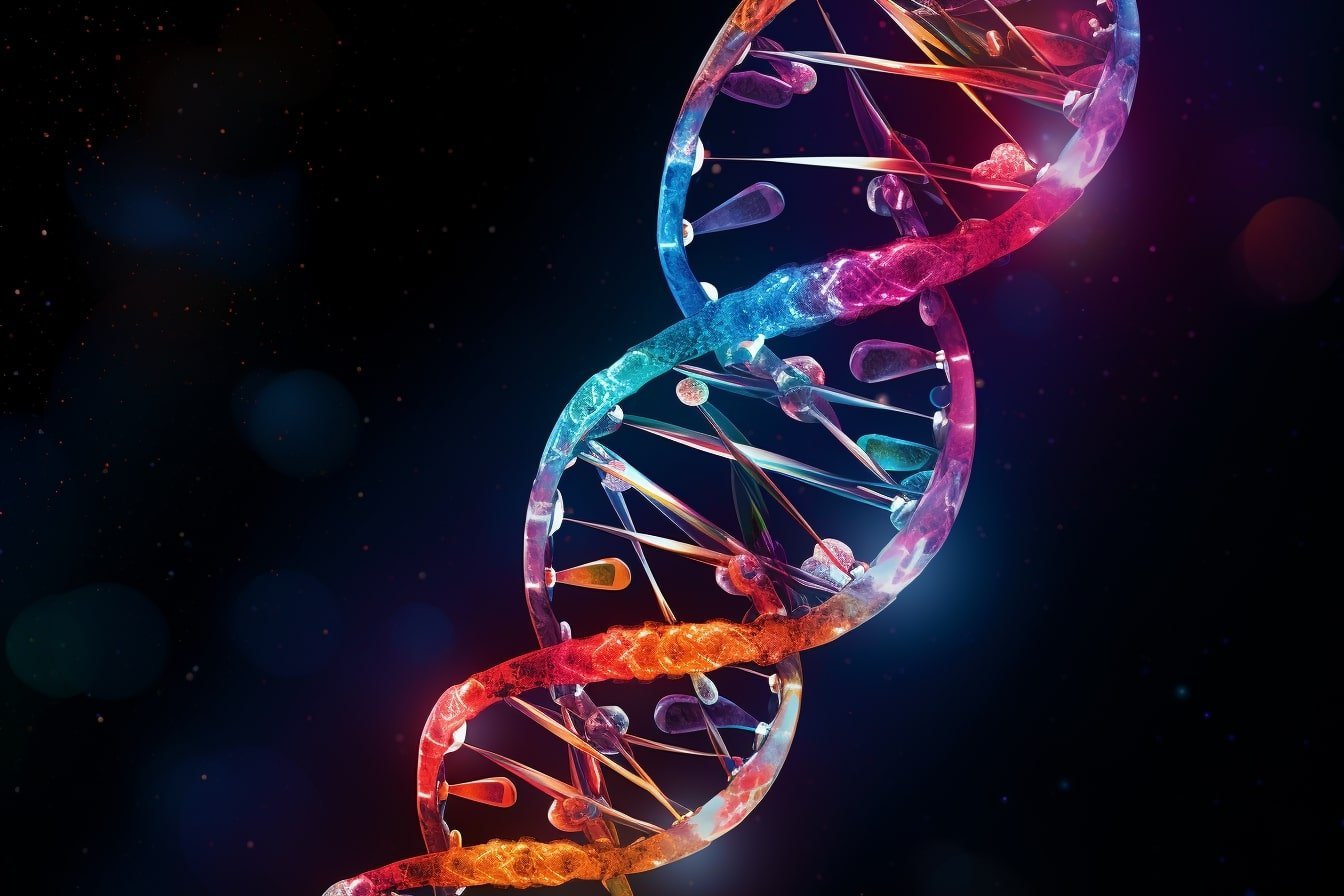Summary: Researchers reveal how a fertilized egg cell, or zygote, initiates its own genetic program, a process known as zygote genome activation.
The research identifies the OBOX gene family as master-regulators, crucial for this activation. These genes instruct the enzyme RNA polymerase II to transcribe the right genes at the right time, beginning the embryo’s development.
The team suggests that the genes’ functions are redundant to ensure this critical transition occurs successfully.
Key Facts:
- The study identifies the OBOX gene family as crucial in awakening the genome of a newly fertilized egg cell (zygote).
- The OBOX genes guide the enzyme RNA polymerase II to start transcribing the correct genes for the embryo’s development.
- The redundancy of these genes’ functions is likely an evolutionary response to ensure the crucial transition from zygote to embryo.
Source: UC Davis
New work by scientists in the U.S. and China shows how a fertilized egg cell, or zygote, hits ‘reset’ so that the newly formed embryo can develop according to its own genetic program.
The study was published July 17 in Nature.
It has been known for some time that the genome of a newly fertilized egg cell is inactive and has to be woken up, said Richard Schultz, research professor at the University of California, Davis, School of Veterinary Medicine and a corresponding author on the paper. This step is called zygote genome activation.

“For the embryo to develop, the oocyte/egg has to lose its identity and does so by making new stuff,” Schultz said. “We now know the first steps in how this transition occurs.”
For the resetting or awakening process to occur, the embryo needs to start transcribing genes from its DNA into messenger RNA that are in turn translated into proteins.
The first genes transcribed will activate other genes, implementing the program that will allow the embryo to develop into a complete mouse (or human). The identity of those first master-regulator genes has been unknown until now.
“This is something that has puzzled me for a long time,” Schultz said.
RNA polymerase II (Pol II) is the enzyme that transcribes DNA to RNA. But Pol II by itself is a dumb enzyme, Schultz said. Other genes, called transcription factors, are needed to instruct Pol II so that it transcribes the “correct” genes at the right time.
In the early 2000s, Schultz had the insight that those first transcription factors would be found among dormant maternal messenger RNAs in the egg cell.
Dormant maternal messenger RNAs are unique to oocytes because the newly synthesized messenger RNA is not translated as it is in somatic cells. As the oocyte matures to become an egg, these dormant maternal messenger RNAs are translated into proteins that then execute their function. Schultz realized that the information to start zygote genome activation would be in a dormant messenger RNA from the mother that would encode a master transcription factor.
OBOX1-8 identified as candidates
Working at the University of Pennsylvania with Paula Stein (a senior member of his lab and now at the National Institute of Environmental Health Sciences), Schultz’s lab identified a large family of genes called OBOX as likely candidates. The family consists of 8 genes, OBOX1-8.
Based on their expression profiles during early development, OBOX1, 2, 3, 4, 5, and 7 were likely candidates. They began working with Wei Xie at Tsinghua University, Beijing to narrow down the candidates.
Working with lab mice, Xie’s team was able to knock out all of the likely candidates and then systematically restore OBOX genes to establish which ones were crucial to zygote genome activation. Without these genes, embryo development stops at the two to four cell stage.
Most interesting, and unanticipated, was that the function of these OBOX genes was highly redundant: a knockout of one could be replaced by another.
That redundancy has likely evolved because the transition is so important, Schultz said. In addition, the researchers found that the OBOX genes function by facilitating Pol II locating to the correct genes to begin zygote genome activation.
In mice, genome activation occurs at the two-cell stage. In human embryos, it occurs later, when the embryo has gone through a couple of rounds of division to form eight cells.
An open question is how conserved this process is across species, i.e., are OBOX-like genes involved in genome activation in humans.
The work also has implications for understanding how embryonic stem cells are reprogrammed so that they can develop into any tissue of the body.
Additional coauthors on the paper are: Shuyan Ji, Fengling Chen, Jiacheng Wang, Ziming Zhou, Lijuan Wang, Qing Zhao, Zili Lin, Bofeng Liu, Kai Xu, Fangnong Lai, Zhuqing Xiong, Xiaoyu Hu, Tianxiang Kong, Feng Kong, Qiujun Wang, Qianhua Xu, Qiang Fan and Ling Liu, Tsinghua-Peking Center for Life Sciences and Tsinghua University, Beijing; Carmen Williams, National Institute of Environmental Health Sciences, National Institutes of Health, Research Triangle Park, North Carolina; Bo Huang, Zhejiang University School of Medicine, Hangzhou.
Funding: The work was supported in part by grants from the National Natural Science Foundation of China, National Key R&D Program of China, and the NIH.
About this genetics research news
Author: Andrew Fell
Source: UC Davis
Contact: Andrew Fell – UC Davis
Image: The image is credited to Neuroscience News
Original Research: Closed access.
“OBOX regulates murine zygotic genome activation and early development” by Richard Schultz et al. Nature
Abstract
OBOX regulates murine zygotic genome activation and early development
Zygotic genome activation (ZGA) activates the quiescent genome to enable the maternal-to-zygotic transition. However, the identity of transcription factors (TFs) that underlie mammalian ZGA in vivo remains elusive.
Here, we showed that OBOX, a PRD-like homeobox domain TF family (OBOX1-8), are key regulators of mouse ZGA. Mice deficient for maternally transcribed Obox1/2/5/7 and zygotically expressed Obox3/4 had a 2-4 cell arrest accompanied by impaired ZGA. Maternal and zygotic OBOX redundantly supported embryonic development as Obox KO defects could be rescued by restoring either of them.
Chromatin binding analysis revealed Obox knockout preferentially affected OBOX-binding targets. Mechanistically, OBOX facilitated RNA Pol II “pre-configuration”, as Pol II relocated from the initial 1-cell binding targets to ZGA gene promoters and distal enhancers.
The impaired Pol II pre-configuration in Obox mutants was accompanied by defective ZGA and chromatin accessibility transition, as well as aberrant activation of 1-cell Pol II targets.
Finally, ectopic expression of OBOX activated ZGA genes and MERVL repeats in mESCs. Hence, these data demonstrate that OBOX regulates murine ZGA and early embryogenesis.






